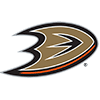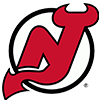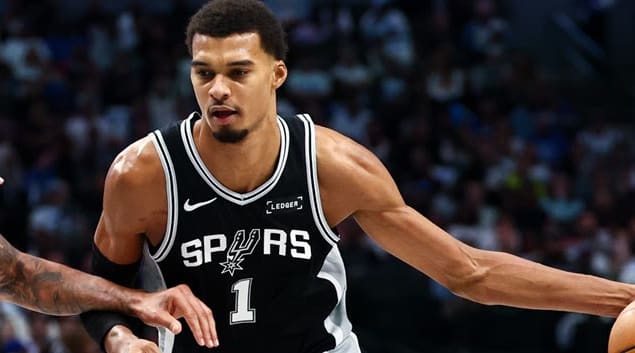Part 1:Why You Should Try An Auction Draft (Free!!)
Part 2:How Auction Values Are Calculated (Free!!)
Part 3:Head-to-Head Rankings and Auction Values (Free!!)
Part 4:9-Category Rotisserie Rankings and Auction Values (Subscriber Content)
Part 5:8-Category Rotisserie Rankings and Auction Values (Subscriber Content)
Part 6:Points Leagues Rankings and Auction Values (Subscriber Content)
The biggest hangup that I've had with auction drafts over the years has been the default dollar values on host sites. I had no idea where they came from or what they represented, so it was hard to trust the values without understanding them.
To put it somewhat simply: auction values measure how much better a player's production is than the players who will be available on the waiver wire during the season.
The players on the waiver wire during the season are used as the comparison benchmark, because they are available to every team in the league for just the cost of a roster spot ($0), which means their level of production is replaceable.
Auction values are similar in concept to the WAR statistic used in baseball, but instead of wins above replacement player, we're interested in fantasy value above replacement player.
Here's an example of how this concept works in fantasy basketball:
Let's pretend that you and I play in a league with only two categories: rebounds and blocks, and that the replacement level in our league (what you can find on the waiver wire) for those two categories are as follows: rebounds (5.2 rpg), and blocks (0.6 bpg).
The first step in calculating auction value is to compare a player's production to these replacement levels. For example, Zach Randolph averaged 10.1 rebounds per game last season, which means he produced 4.9 rpg above replacement level (10.1 - 5.2 = 4.9). Randolph also averages 0.3 blocks per game below the replacement level threshold of 0.6 bpg.
This means that even though Randolph produced some blocks for your team, he actually hurts your team in the blocks category because his level of production is below what you would expect to find available on the waiver wire if you dropped Randolph. The table below summarizes our evaluation of Randolph's production in our league:
Zach Randolph | 2013-14 AVG | Replacement Level | Above Replacement Level |
RPG | 10.1 | 5.2 | 4.9 |
BPG | 0.3 | 0.6 | -0.3 |
The next question we need to answer is how to combine Randolph's above-replacement-level production in rebounds with his below-replacement-level production in blocks. Do the rebounds outweigh the blocks, making Randolph an above-replacement-level player? Do the blocks outweigh the rebounds, making Randolph a below-replacement-level player?
To answer this question, we first need to find a way to combine these values. We can't simply add 4.9 rebounds above replacement level to 0.3 blocks below replacement. This would lead to us overvaluing high-volume categories like rebounds.
What we can do is combine the values from these two categories by using standard deviations. If you aren't familiar with standard deviations, don't fret.
All you need to know is that they allow us to put the categories on the same measurement scale.
Once the categories are on the same scale, we can accurately combine the value coming from rebounds with the value coming from blocks to calculate Randolph's overall value in our league. This is illustrated in the table below:
Zach Randolph | 2013-14 AVG | Replacement Level | Above Replacement Level | Standard Deviation | Value (Z-Score) |
RPG | 10.1 | 5.2 | 4.9 | 2.9 | 1.7 |
BPG | 0.3 | 0.6 | -0.3 | 0.6 | -0.5 |
Total | 1.2 |
The standard deviation for rebounds is 2.9 rpg, and the standard deviation for blocks is 0.6 bpg. This tells us that being 2.9 rpg above replacement level is equally as valuable in our league as being 0.6 bpg above replacement level.
Randolph's 10.2 rpg are 1.7 standard deviations above replacement level (4.9 rpg/2.9 = 1.7), and his 0.3 bpg are -0.5 standard deviations below replacement level (-0.3 bpg/0.6 = -0.5). In total, Randolph is 1.2 standard deviations above replacement level in our two-category league.
Once we have calculated how far above or below replacement level each player is, we can assign them a corresponding share of our league's auction dollars. For the sake of simplicity, let's assume that there are only five players in our league that are above replacement level:
Player | Above Replacement | % of Value | $100 League |
Andre Drummond | 4.3 | 34% | $34 |
Andrew Bogut | 3.5 | 28% | $28 |
LaMarcus Aldridge | 2.6 | 20% | $20 |
Zach Randolph | 1.2 | 9% | $9 |
Carmelo Anthony | 1.1 | 9% | $9 |
Total | 12.7 |
The combined value above replacement level for these five players is 12.7. Nine percent of this value (1.2/12.7) comes from Zach Randolph, therefore he is worth 9% of the dollars in our auction. If there are $100 available in our league, he is then worth $9.
One aspect about auction values that is often overlooked is that the values change as the auction is happening. This is because the values are based on the available dollars, and the amount of value above replacement level available in the league, which changes each time a player is selected. For example, let's assume that Zach Randolph was nominated for auction and that I ended up spending $33 on him, even though his pre-draft value was only $9.
This means there is now less value (11.5 vs. the previous 12.7) and less auction dollars (your $50 and my $17 = $77, compared to the original $100) available in our league. Using these new parameters, here are the updated auction values for our league:
Player | Above Replacement | % of Value | Previous $$ | Updated $$ |
Andre Drummond | 4.3 | 37% | $34 | $25 |
Andrew Bogut | 3.5 | 30% | $28 | $20 |
LaMarcus Aldridge | 2.6 | 23% | $20 | $15 |
Carmelo Anthony | 1.1 | 10% | $9 | $6 |
Total | 11.5 |
As a result of my team overpaying for Randolph, the updated auction values for the remaining players in the league have decreased (Drummond was previously worth $34, and now is worth $25). This doesn't mean that these players are suddenly worse, it just means that, because I overpaid for Randolph, you should be able to get a bargain when you buy a player.
Not only do auction values adjust after each pick in an auction, but they also change significantly with different league settings. For example, more players are owned in 12-team leagues than in 10-team leagues, which means the replacement level will be lower in a 12-team league. This impacts the auction value of every player in the player pool.
In addition, each category that is added or removed from your league's setting impacts the auction values. If you add turnovers as a category to your league, then players who don't turn the ball over as frequently as others become more valuable.
To illustrate the impact that different league settings have on auction values, check out the top-10 rankings and auction values from last season for an eight-category league (no turnovers) and a nine-category league (includes turnovers):
8 Category | Player | Auction $ | 9 Category | Player | Auction $ | |
1 | Kevin Durant | $95 | 1 | Kevin Durant | $95 | |
2 | Stephen Curry | $73 | 2 | Stephen Curry | $65 | |
3 | LeBron James | $69 | 3 | LeBron James | $63 | |
4 | Kevin Love | $58 | 4 | Kevin Love | $61 | |
5 | James Harden | $57 | 5 | Anthony Davis | $57 | |
6 | Carmelo Anthony | $54 | 6 | Dirk Nowitzki | $57 | |
7 | John Wall | $50 | 7 | Carmelo Anthony | $55 | |
8 | Paul George | $50 | 8 | James Harden | $50 | |
9 | Dirk Nowitzki | $44 | 9 | Serge Ibaka | $49 | |
10 | Anthony Davis | $44 | 10 | Chris Paul | $48 |
I have highlighted Anthony Davis because there has been some debate early this fantasy season about how much to spend on Davis in an auction. Your perspective on the issue probably depends on whether you are familiar with an eight-category league (where he was worth $44 last season) or a nine-category league (where he was worth $57). Whatever your perspective is on Davis, the point here is that auction value changes pretty dramatically based on the settings of your league.
ESPN and Yahoo have traditionally provided us with just a single set of auction values to use, probably in an effort to keep things from becoming overly-complicated. These auction values can be a very useful guide if you play in a standard league, but unfortunately, most fantasy owners mistakenly treat these suggested values as gospel rather than a guide.
To help you feel comfortable with straying from ESPN or Yahoo's suggested auction values, I've taken ESPN's player projections from their own draft kit last season and calculated their corresponding auction values in a 10-team, eight-category league (ESPN standard league), using the method described above.
I've also included ESPN's suggested auction values from the same draft kit, which theoretically should match with the values coming from their projections in the table below:
Rank | Player | Actual Value from ESPN's Projection | ESPN's Suggested Value in Drafts |
1 | Kevin Durant | $82 | $70 |
2 | LeBron James | $78 | $70 |
3 | James Harden | $58 | $66 |
4 | Chris Paul | $53 | $65 |
5 | Stephen Curry | $55 | $62 |
6 | Kevin Love | $27 | $59 |
7 | Kyrie Irving | $48 | $57 |
8 | Marc Gasol | $23 | $55 |
9 | Paul George | $49 | $53 |
10 | Carmelo Anthony | $40 | $50 |
As you can see, the two sets of dollar values do not match. For example, Kevin Durant's suggested auction value was $12 lower than the actual value of his projection, and in turn, several of the other players had a suggested value higher than the value based off of their projection.
If you're curious about where ESPN's suggested auction values come from, it appears that they first ranked all of the players and then assigned a suggested value of $70 to the top two players. From there, the suggested auction value for each player is reduced slightly for each spot down in the rankings a player is slotted.
In fact, if we look just a little further down on ESPN's suggested auction value list, this becomes even more apparent:
Rank | Player | Actual Value from ESPN's Projection | ESPN's Suggested Value in Drafts |
25 | Ty Lawson | $16 | $30 |
26 | Joakim Noah | $19 | $29 |
27 | Brandon Jennings | $25 | $28 |
28 | Jrue Holiday | $18 | $27 |
29 | David Lee | $22 | $26 |
30 | Tony Parker | $21 | $25 |
31 | Dwight Howard | $10 | $24 |
32 | Blake Griffin | $21 | $23 |
33 | Mike Conley | $22 | $22 |
We can see that the auction values decrease by $1 for each spot down in the rankings that a player is slotted.
The auction values based off of the rankings can be a useful tool on draft day, particularly if you play in a standard league. However, the point to understand here is that these suggested auction values are somewhat arbitrary and subjective, and so there is no need to follow them religiously. If you believe that getting Andre Drummond on your team this season is the only thing standing between you and your league's championship trophy, don't be afraid to exceed ESPN's suggested value to get him. Remember, you're trying to win your league, not the auction.
If you'd like to read Part 1 of this series Why You Should Try An Auction Draft, click the link.
All articles in this series are free, but if you'd like to see the rest of our content and tools, you can claim a free 10 days at rotowire.com/free or sign up for a subscription at the link.























